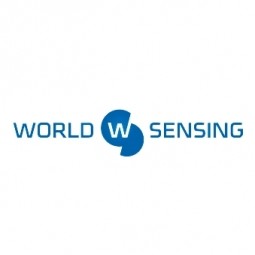下载PDF
Barcelona Case Study

技术
- 分析与建模 - 实时分析
- 功能应用 - 远程监控系统
- 传感器 - 相机/视频系统
- 传感器 - 全球定位系统
- 传感器 - 红外传感器
适用行业
- 城市与自治市
适用功能
- 商业运营
用例
- 交通监控
挑战
巴塞罗那的繁忙交通及其相关的高污染是促使一些公司和大学制定改善市中心交通的战略的主要因素。 Bitcarrier 是 In4Mo 项目涉及的技术之一,其主要目标是开发构成智能移动核心的应用程序,这是智能城市概念的基本支柱之一。
客户
巴塞罗那市
关于客户
-
解决方案
Bitcarrier 是针对城市环境的实时智能交通管理和信息解决方案。它专为满足地方当局优化交通的需求而设计。 Bitcarrier 解决方案在巴塞罗那市实施,以跟踪路线和车辆。其城市传感器审计的数据与其他现有技术的数据相结合,从而为丰富的增值数据分析创建了一个可靠且准确的系统。
收集的数据
Pollutants detection, Routes, Traffic Behavior, Traffic Congestion Levels, Vehicle Location Tracking
运营影响
相关案例.

Case Study
Turning A Stadium Into A Smart Building
Honeywell created what it called the “intelligent system” for the National Stadium in Beijing, China, turning the venue for the opening and closing events at the 2008 Summer Olympics into a “smart building.” Designed by highly controversial artist Ai Weiwei, the “Bird’s Nest” remains one of the most impressive feats of stadium architecture in the world. The 250,000 square meter structure housed more than 100,000 athletes and spectators at a time. To accommodate such capacity, China turned to Honeywell’s EBI Integrated Building Management System to create an integrated “intelligent system” for improved building security, safety and energy efficiency.
.png)
Case Study
Smart Street Light Network (Copenhagen)
Key stakeholders are taking a comprehensive approach to rethinking smart city innovation. City leaders have collaborated through partnerships involving government, research institutions and solution providers. The Copenhagen Solutions Lab is one of the leading organizations at the forefront of this movement. By bringing together manufacturers with municipal buyers, the Copenhagen Solutions Lab has catalyzed the development and deployment of next-generation smart city innovations. Copenhagen is leveraging this unique approach to accelerate the implementation of smart city solutions. One of the primary focus areas is LED street lighting.

Case Study
Buoy Status Monitoring with LoRa
The Netherlands are well-known for their inland waterways, canals, sluices and of course port activities. The Dutch Ministry of Infrastructure indicates that there are thousands of buoys and fixed items in and near water environments that would profit from IoT monitoring. One of the problems with buoys for example, is that they get hit by ships and the anchor cable breaks. Without connectivity, it takes quite some time to find out that something has happened with that buoy. Not to mention the costs of renting a boat to go to the buoy to fix it. Another important issue, is that there is no real-time monitoring of the buoys at this moment. Only by physically visiting the object on the water, one gains insight in its status.

Case Study
China Mobile Smart Parking
Smart Parking, powered by NB-IoT technology, is making it easier for drivers to find free parking spots. Cities can better manage their parking assets and maximize the revenue available to them as a result. Drivers searching for parking create congestion and pollution by circling and hunting for available parking. Smart Parking services are able to significantly ease these problems by guiding a driver directly to a parking space.







